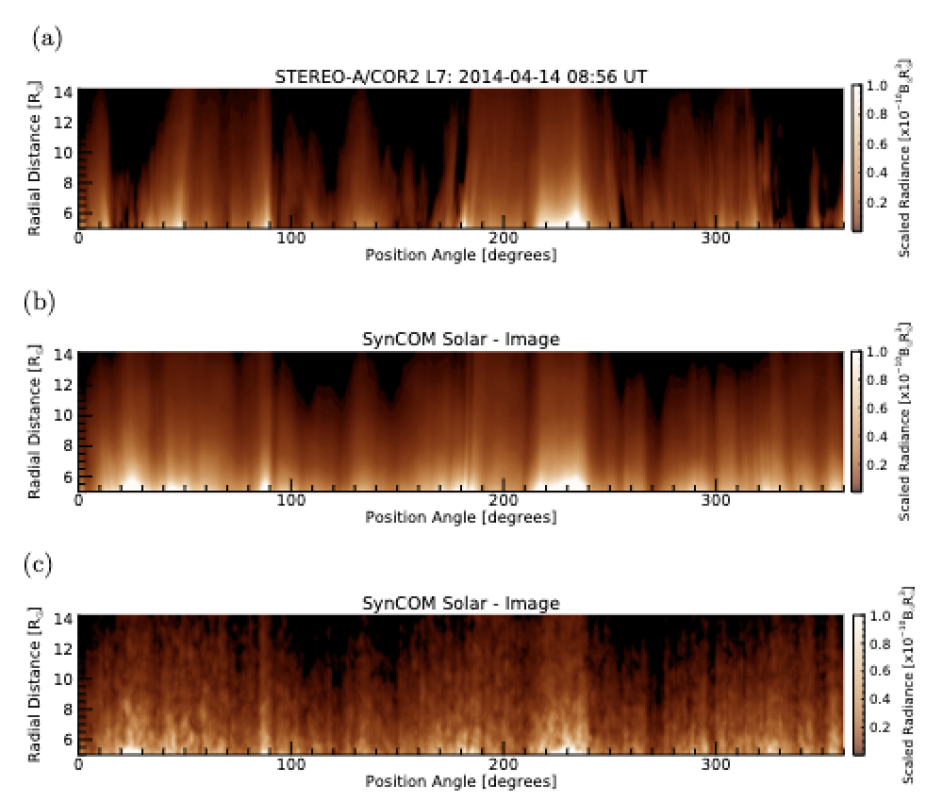
Comparison between a COR2 and a SynCOM simulated image; (a) Training data set from STEREO-A/COR2 instrument. (b) SynCOM simulation using solar constraints with 5,000 blobs. The blob sizes are doubled, making the image appear more natural compared to COR2 images. (c) SynCOM simulation using solar constraints with 5,000 blobs. The smaller blob sizes highlight its fine-scale structures.
Astrophysical Journal— (Published: November 2024) The Synthetic Corona Outflow Model (SynCOM), an empirical model, simulates the solar corona's dynamics to match high-resolution observations, providing a useful resource for testing velocity measurement algorithms. SynCOM generates synthetic images depicting radial variability in polarized brightness and includes stochastic elements for plasma outflows and instrumental noise. It employs a predefined flow velocity probability distribution and an adjustable signal-to-noise ratio to evaluate different data analysis methods for coronal flows. By adjusting parameters to match specific coronal and instrumental conditions, SynCOM offers a platform to assess these methods for determining coronal velocity and acceleration. Validating these measurements would help to understand solar wind origins and support missions such as the Polarimeter to Unify the Corona and Heliosphere (PUNCH). In this study, we demonstrate how SynCOM can be employed to assess the precision and performance of two different flow tracking methods. By providing a ground-truth based on observational data, we highlight the importance of SynCOM in confirming observational standards for detecting coronal flows.